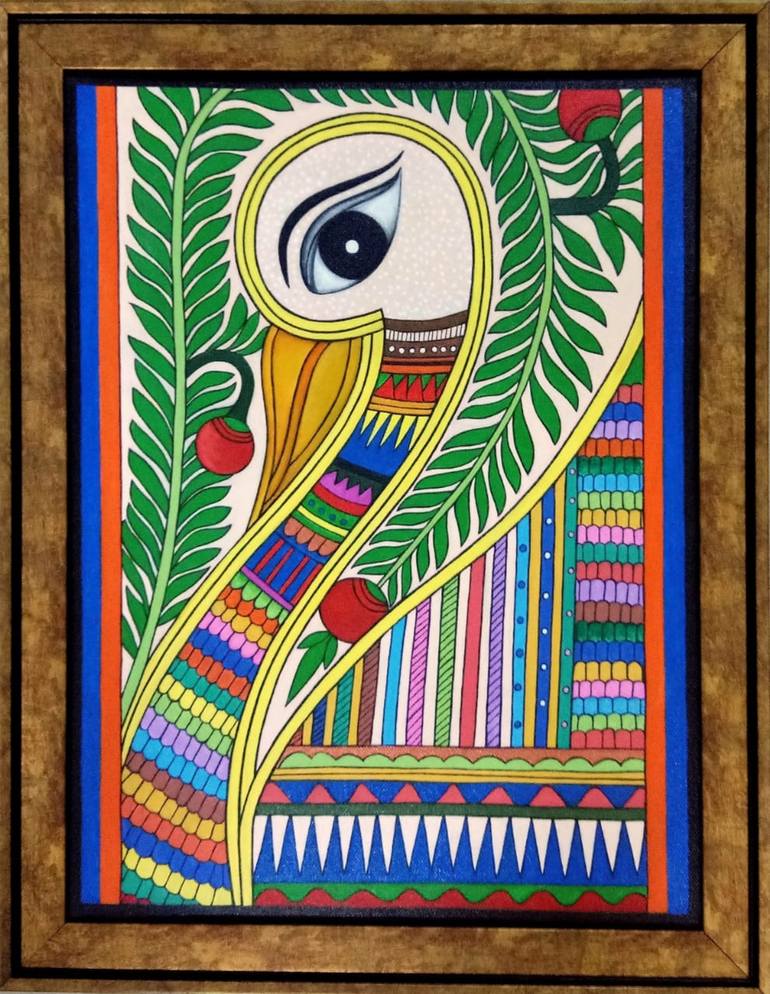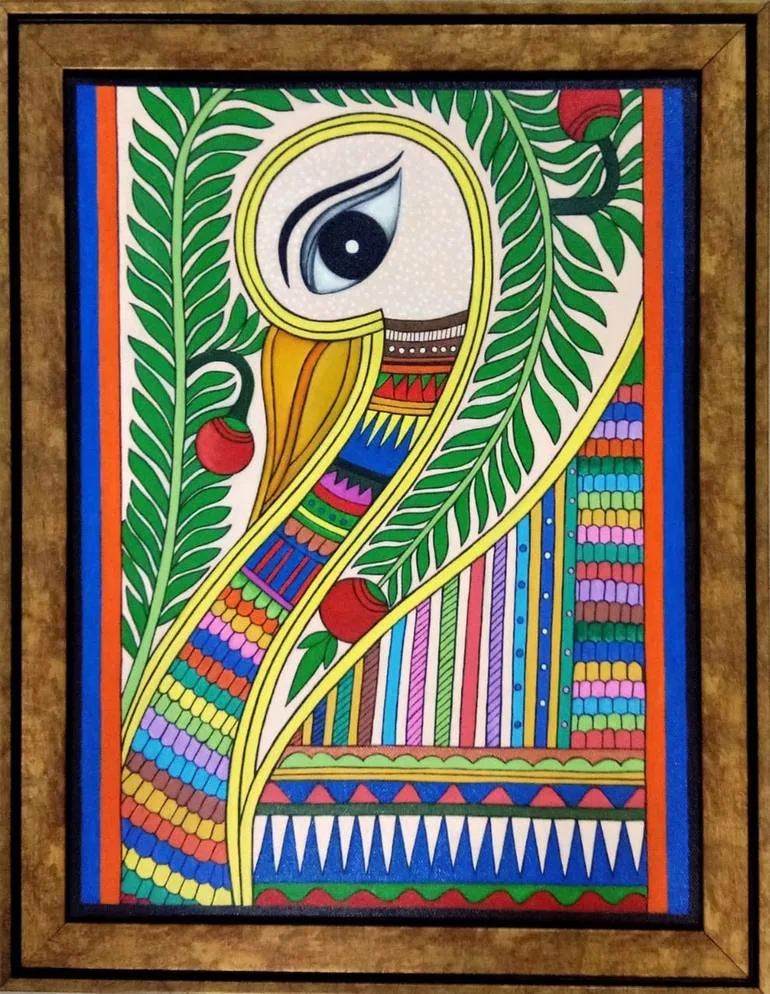Madhubani painting: Origin, Characteristics etc
-
Origin:
Madhubani painting has its origins in Mithila region of Bihar.
- The painting is one of the oldest and most famous Indian art forms which is also practised in Nepal.
- Traces of Madhubani art can also be noticed in the Ramayana, the Indian epic.
- It is also known as Mithila or Madhubani art.

-
Characteristics:
These paintings are popular because of their tribal motifs and use of bright earthy colours.
- Traditionally the women of the village drew these paintings on the walls of their dwelling, as a demonstration of their feelings, hopes, and ideas.
- Today men are also involved to meet the demand.

-
Style:
It includes geometrical patterns, floral, animal and bird motifs.
-
Colours:
The colours used in paintings comprise natural extracts from plants and other natural sources. E.g.: Black colour is obtained by mixing soot with cow dung; blue from indigo; white from rice powder; orange from palasha flowers, etc.
- The colours are applied flat with no shading and no empty space is left.
- These are usually dark and bright with pigments like lampblack (obtained from coal) and ochre (earthy yellow pigment).
- These paintings are not made with modern brushes but rather with twigs, matchsticks, and fingers.
- But now artists use brushes, nib-pens and synthetic colours as well to paint.
-
Themes:
It is based on the mythological characters which depict the life of Hindu deities like Krishna, Rama, Lakshmi, Shiva, Durga, and Saraswati.
- The designs widely painted are of Tulasi plant, court scenes, wedding scenes, social happenings etc.
- Also, heavenly bodies like the Sun and the Moon often form the centre piece of paintings.
- Eminent Artists: Karpuri Devi, Mahalaxmi and Dulari.
https://todaynewslife.com/armed-palestinian-group-hamas-launched-attack-on-israel/
